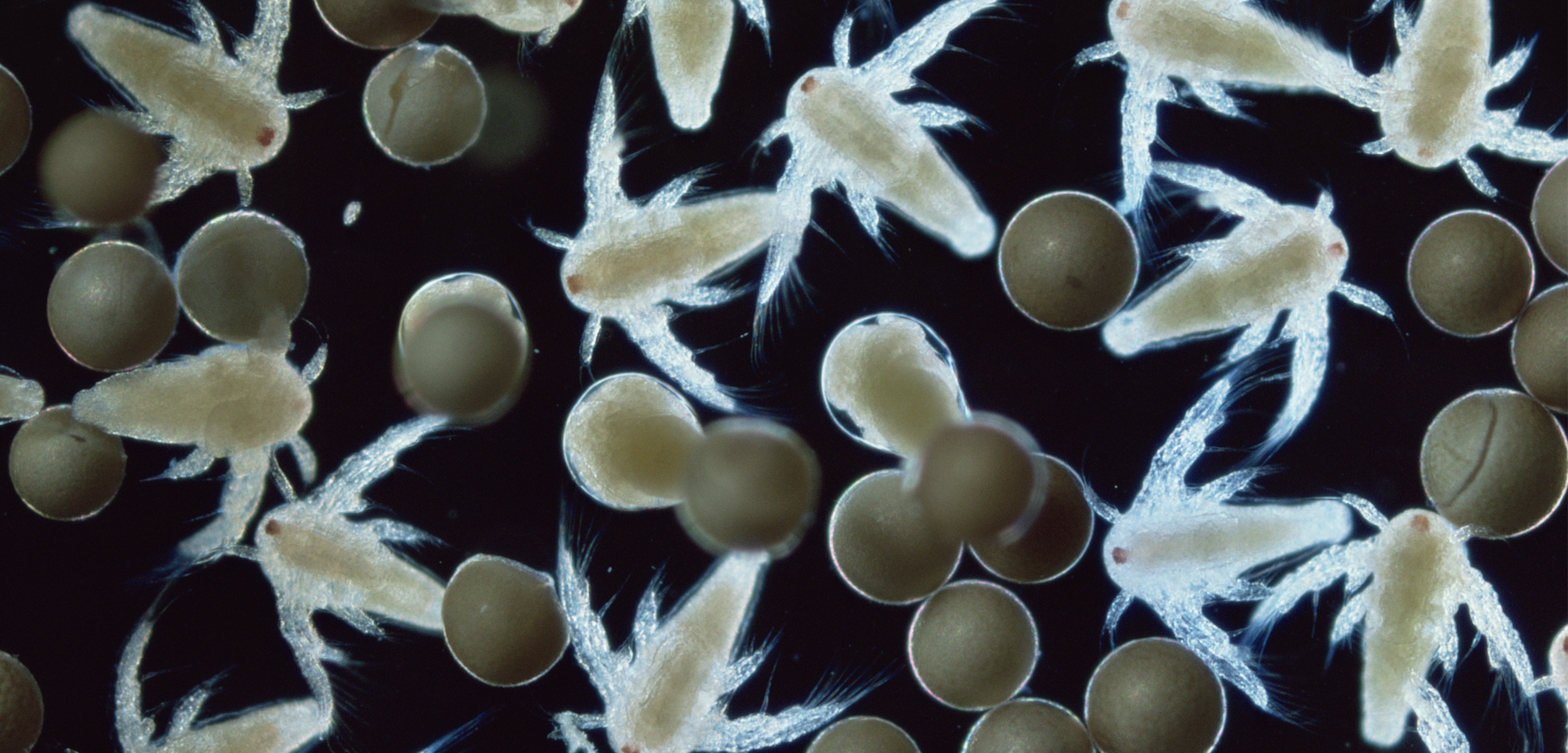Scientists Can Spy Shrimp Eggs from Space
By analyzing the light it reflects, scientists can say whether that floating blob in a satellite image is made up of plastic, shrimp, seaweed, or something else.
Article body copy
It’s become a bit clichéd to say with surprise that something—a wildfire, the Great Barrier Reef, a ship blocking the Suez Canal—can be seen from space. But every so often, scientists manage to spot something from space that truly is surprising. Case in point: University of South Florida optical oceanographer Chuanmin Hu and his colleagues have worked out ways of spotting aggregations of small floating objects, such as shrimp eggs, algae, and herring spawn, from space. And not only can they find these buoyant masses—they can tell you which is which.
Hu and his team can’t zoom in on a satellite image enough to actually see a shrimp egg in the way that you could look at the picture and say, “That’s a shrimp egg!” So how can they tell the difference?
The key to identifying the objects, says Hu, is that “every floating matter has its fingerprint.”
Different objects, being made of different materials, reflect characteristic wavelengths of light—patterns that scientists can read using multispectral instruments mounted on satellites. Using these patterns to identify substances is known as spectroscopy. The technique is common in labs, and scientists in the rapidly evolving field of remote sensing are carrying it over into satellite analysis.
Hu and his team, along with scientists around the world, are building a knowledge base of what different objects and materials look like from space. That way, when they come across an unfamiliar floating object on a satellite image, they can look to see whether the wavelengths it reflects match up with anything that’s been analyzed before.
Sometimes Hu and his colleagues can only speculate about the identity of floating matter until they have a chance to take a close-up look. A trip to Utah’s Great Salt Lake, for example, confirmed their suspicion that filamentous white slicks they’d seen on satellite images were massive accumulations of brine shrimp eggs. Over the past year, Hu’s team has also published a method for identifying herring spawn, and they are attempting to identify sea snot—the disgusting films of phytoplankton mucus that plagued Turkey last summer.
But there’s also a pressing problem that scientists hope remote sensing can address—the vast amounts of plastic that are clogging the oceans.
“The main idea is to create an algorithm that can detect the plastic litter,” says Konstantinos Topouzelis, an environmental scientist at the University of the Aegean in Greece. “So the cleaning efforts can be guided.”
But identifying plastic from space comes with challenges. For one, there are many kinds of plastic, and some blend in with the surrounding water. Plastic also aggregates and disperses quickly. And while some aggregations are huge, like the Great Pacific Garbage Patch, many are small and difficult to pick out in the images.
For the past few years, Topouzelis and his students have been deploying and analyzing targets, such as shopping bags and fishing nets, made of various plastic materials. The spectral signatures of these known plastics give researchers a starting point when they’re wondering whether the swirls and swooshes on other satellite images might be plastic.
Oceanographer Katerina Kikaki, at the National Technical University of Athens in Greece, is taking a different approach. She and her colleagues have scoured through seven years of scientific publications, records from citizen scientists, and media reports to find examples of plastic pollution. They recently published a database of satellite images that correspond to these known plastic accumulations. “Our data set can enable the community to explore the spectral behavior of plastic debris,” Kikaki says.
Kikaki’s and Topouzelis’s studies are examples of ground truthing—analyses of known objects that help confirm if remote assessments are accurate.
Having eyes on the ground can really help drive the field forward. Just looking at satellite observations, “my view is narrowed,” Hu says. “I may ponder over [a satellite image] for weeks or months.” But if a boat captain tweets a picture of sea snot along with some geographical information, that can save Hu a lot of time.
So if you’re on the water, and you stop to appreciate some mysterious slime, put it on social media! An optical oceanographer may be staring at a picture of the same region, wondering what’s out there.

